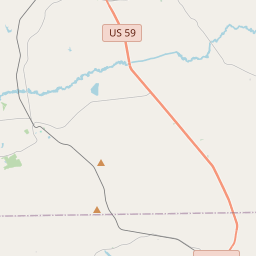Site of Town of Spivey, 1870s-1900







Founded by Civil War veteran James Jackson Spivey; brothers Elisha P. and George W. Spivey lived nearby. In early days mail arrived by wagon. Houston East & West Texas Railroad crossed the founder's land, building Spivey Station, 1886. During late 1880s Hicks Lumber Mill and workers' houses were erected. U. S. Post Office was established in 1891, with Isaac W. Spivey, postmaster. Friendship Baptist Church was organized in 1890s with James M. Spivey, pastor. After 1900, town gradually moved over to Paxton Switch. Friendship Cemetery, with 33 graves, marks the old site
As one of the most visible programs of the Texas Historical Commission (THC), historical markers commemorate diverse topics in Texas history, including: the history and architecture of houses, commercial and public buildings, religious congregations, and military sites; events that changed the course of local and state history; and individuals who have made lasting contributions to the state, community organizations, and businesses.
Texas is home to the world's largest bat colony. The Bracken Bat Cave, near San Antonio, is home to millions of Mexican free-tailed bats.
In 1835, the Mexican government granted land in the area to Stephen F. Austin's colony, which attracted many settlers to Shelby County. The county was officially established in 1836 and named after Isaac Shelby, who was the first governor of Kentucky. The county's population grew steadily, and by the mid-19th century, it became a major center for agriculture, with cotton being the primary crop.
During the Civil War, Shelby County, like many other parts of Texas, sided with the Confederacy. It sent many men to fight in the Confederate army, and the local economy suffered from the effects of the war. However, the county rebounded after the war, and by the late 19th century, it experienced an economic boom with the discovery of oil and gas reserves.
In the 20th century, Shelby County continued to thrive, with the oil and gas industries playing a significant role in its economy. The county also witnessed significant social and political changes, with the Civil Rights Movement bringing about integration and equal rights for African Americans. Today, Shelby County remains an important agricultural and industrial center, with a mix of rural landscapes and urban developments.
Shelby County Timeline
This timeline provides a glimpse into the major events and milestones that have shaped the history of Shelby County, Texas.
- 1823 - Shelby County is established
- 1836 - Shelby County plays a role in the Texas Revolution
- 1845 - Texas is admitted to the United States, including Shelby County
- 1859 - The Texas State Legislature establishes Center as the county seat of Shelby County
- 1861-1865 - Shelby County is deeply affected by the American Civil War
- 1905 - The discovery of oil leads to economic growth in Shelby County
- 1940s-1950s - Shelby County experiences a decline in population due to rural-to-urban migration
- 1976 - Shelby County celebrates its sesquicentennial anniversary
- 2000s - Shelby County continues to be home to a diverse and vibrant community